
This winter we have been working with some flyers who are coming back to combat.
One has been flying RC for many years and has realized the errors of his ways. He would have taken up stunt, but said it was like RC but with lines. In helping him, I realized that there is a lot of information on the web, if you know where to look, as well as supplier list. These are valuable sources if you know what you need. This article summarizes the "What do I need and where can I get it".
A second realization is that people either do not want to build, do not know how to build, or do not have a shop to build in. For years, I built in the equivalent of a closet in the back of a carport. Regardless of whether you want to build, what you need is a place to do repairs and equipment maintenance
The third realization is that if you are starting from scratch, startup costs are high. Once you are set up, then it is just a matter of how much you want to spend on high zoot equipment or other events. I try to limit myself to a budget, but cannot pass up a good deal especially if it is for an event that I have been thinking about flying. I just got a scale kit from eBay.
If you are just starting out or re-entering ("retread"), listen and understand what people are telling you. At the risk of sounding overbearing: Do what they say. Once you do this, then you can start to add your own twist.
Our community is small. We welcome and support new flyers. There are no secrets; there are many opinions and personal preferences. The best flyer will be determined in the circle.
One of the first questions is "What do I fly"? Typically, a returning flyer thinks they can get back into flying with a 1/2-A and then work there way up to the other events. Other times they remember Slow Combat and think that is the way to go. It is at this point that a little education is required.
1/2-A is a great event. We have engines that run and are reliable. We can use electric starters - all positive. There are ARF planes. Brodak sells everything needed to fly Half A. I cannot speak to the engines that he sells, since I use higher-end engines. See Don McKay's article on The Advantages of Half A combat.
Slow combat was a way for people to get back into the event. This was before it morphed into profile fast. Slow is no longer flown. A variant is speed limit.
Around the Northwest, we fly Diesel Combat (D-Bat). There are sources for engines; however, there is not a ready source for ARF planes. Mel Lyne builds planes and tanks; however, his time is limited. The planes are simple to build, the problem is there is no off-the-shelf tank other than Mel's. You can take a Brodak tank kit and make your own. For information on Diesel, see Don McKay's Flying Lines article on Building a Diesel Combat Plane and mine on Building a Jig for the Dominator. This is a good event to add, but not the place to start mainly because of the learning curve for Diesel engines. (EDITOR'S NOTE: Also coming shortly, Ken Burdick's article on Building the Dominator.)
If you are a returning flyer, Speed Limit is similar to what you remembered as slow combat. In my opinion, Speed Limit is the way to get back into flying combat. Here are a couple of reasons.
With the majority of the flyers in the U.S. flying F2D, Fast is pretty much a West Coast event. If you want to fly Fast in a contest, you are limited to the Bladder Grabber, the occasional Southern California contest, and the Nats.
So what does this all mean? It means get equipment that you can fly in speed limit. After that, you can decide if you want to add other events. The above is written based on using 15 size engines. There are people successfully flying speed limit using other engines. These range from 25s' to 40s'. In the Northwest, we fly contest with kills rules as well as the Chehalis Cup, which is cuts only. Contest season starts at the end of March and goes through September.
A couple of articles that you should read (Look in Combat in Flying Lines) are Jeff and Ken's primer on the R&B Ripoff and Don McKay's on How to Trim a Combat Plane. There are several articles that I have written that are in the Combat Section that you might find helpful.
One final comment, start with one event. This will allow you get your equipment and skills up to speed. You can then move into the other events.
WHAT DO I NEED?
I assumed that the RC flyer would be set with a pit box and tools. He did have the pit box and the trailer to haul it to the field, thus he is starting at zero.
Do you need an elaborate pit box? No, but you need something to carry tools and supplies and something that is organized. The bag from the Chinese takeout is not an option. A simple garden tote will adapt and work well. What you need is to equip it with the tools and equipment to support your flying.
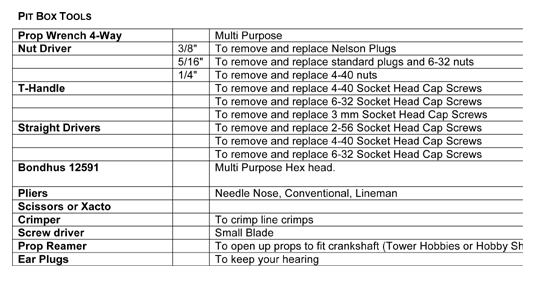
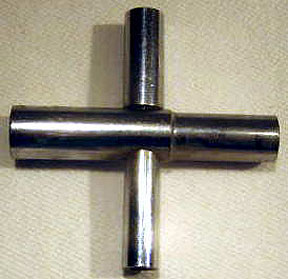
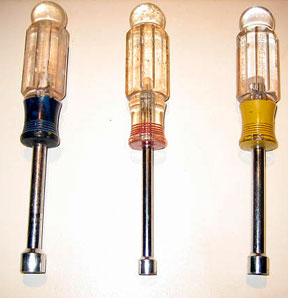
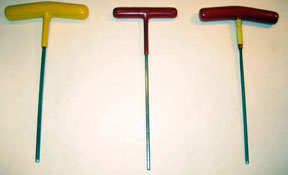
Prop wrench, nut drivers, T-handles. Buzz Wilson photos.
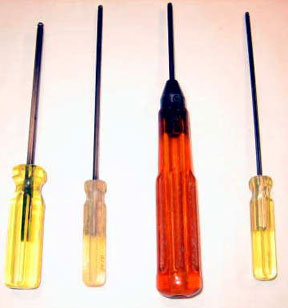
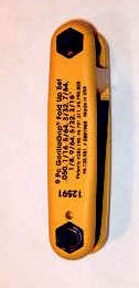
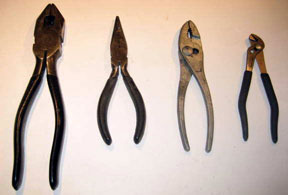
Straight drivers, Bondhus, pliers. Buzz Wilson photos.

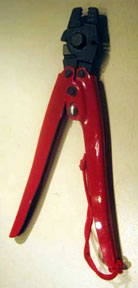
Reamers, crimper. Buzz Wilson photos.
Because people come in and out of the hobby, one source is to find someone that is either leaving or is downsizing. I recently purchased 5 engines and 20 planes both new and used for $900 from someone that is downsizing. The last thing I need is more planes and engines. Most of this equipment will go to people that are getting into the event or who need additional equipment. Most flyers will have used equipment that they will sell to get you started.
The following is a list of suppliers specializing in control line. They range in size from large to cottage industries. Start out at your local hobby shop. Try to get them interested in supporting control line.
Because this is article is written for the returning or new flyer, I am excluding links to the higher tech competition equipment. Ready to fly planes and engines are available from suppliers in the US and in Europe. The control line site list links for these.

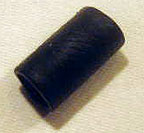

Fuel bottle, hose, finger guard. Buzz Wilson photos.
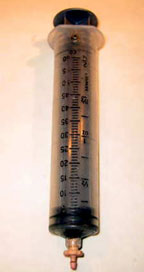


Fuel syringe, line reel, fuel line clip. Buzz Wilson photos.



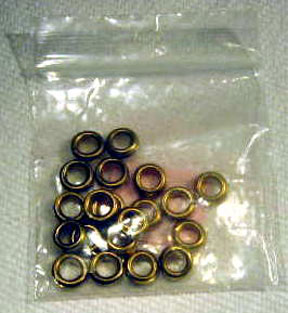
Battery, battery clip, glow plug caddy, line thimbles. Buzz Wilson photos.

This page was upated March 15, 2010